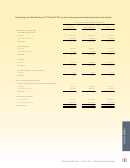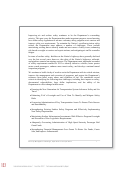Performance And Accountability Report - Fiscal Year 2013 - Federal Aviation Administration - U.s. Department Of Transportation Page 51
ADVERTISEMENT
 1
1  2
2  3
3  4
4  5
5  6
6  7
7  8
8  9
9  10
10  11
11  12
12  13
13  14
14  15
15  16
16  17
17  18
18  19
19  20
20  21
21  22
22  23
23  24
24  25
25  26
26  27
27  28
28  29
29  30
30  31
31  32
32  33
33  34
34  35
35  36
36  37
37  38
38  39
39  40
40  41
41  42
42  43
43  44
44  45
45  46
46  47
47  48
48  49
49  50
50  51
51  52
52  53
53  54
54  55
55  56
56  57
57  58
58  59
59  60
60  61
61  62
62  63
63  64
64  65
65  66
66  67
67  68
68  69
69  70
70  71
71  72
72  73
73  74
74  75
75  76
76  77
77  78
78  79
79  80
80  81
81  82
82  83
83  84
84  85
85  86
86  87
87  88
88  89
89  90
90  91
91  92
92  93
93  94
94  95
95  96
96  97
97  98
98  99
99  100
100  101
101  102
102  103
103  104
104  105
105  106
106  107
107  108
108  109
109  110
110  111
111  112
112  113
113  114
114  115
115  116
116  117
117  118
118  119
119  120
120  121
121  122
122  123
123  124
124  125
125  126
126  127
127  128
128  129
129  130
130  131
131  132
132  133
133  134
134  135
135  136
136  137
137  138
138  139
139  140
140  141
141  142
142  143
143  144
144  145
145  146
146  147
147  148
148  149
149  150
150 System Risk Event Rate (SRER)
Evaluate separation incidents caused by other factors,
¢
Reduce risks in flight by limiting the rate of the most
including pilot deviations.
serious losses of standard separation to 20 or fewer for
every thousand (.02) losses of standard separation within
Avoid underreporting and misclassification of incidents.
¢
the national airspace system.
FY 2013
Limit the rate of the most serious losses of standard
In FY 2013, with a preliminary result of 5.66, we achieved our
Target
separation to 20 or fewer for every thousand (.02) losses
target of limiting the rate of the most serious losses of standard
of standard separation within the national airspace
separation to 20 or fewer for every thousand (.02) losses of
system.
standard separation within the system. The initial target of
FY 2013
5.66
20 was based on a projection of the SRER based on historical
Result
(Preliminary estimate until final result becomes available in
January 2014.)
operational error and pilot deviation data. The target of 20 set
for FY 2011 through FY 2014 will establish a baseline while
Public
Targeting the resources of the ATO to mitigate the most
Benefit
serious hazards in the national airspace system results in
deploying improved analysis and loss-detection equipment. It
a focused increase in safety. A similar safety enhancement
will set a minimum level of system performance that should
approach process in commercial aviation produced a
be attainable, while we continue to strive for even greater
dramatic decrease in the accident rate during the first part
improvements.
of the 21st century.
Finally, the SRER improves our ability to measure the system-
One of the fundamental principles of aviation safety is
wide safety performance of NextGen implementation. With this
separation. A key FAA duty is to ensure that aircraft flying within
additional data, we will be able to determine the safety impact
the national airspace system maintain the required distance from
of new NextGen air traffic procedures and technologies and,
each other. To control losses of separation, we need an accurate
ultimately, make more knowledgeable decisions about reductions
picture of system safety performance. The System Risk Event
in separation standards.
Rate (STER) enables us to identify losses of separation.
System Risk Event Rate (SRER)
Introduced in FY 2011, the SRER represents a move away from
Rate of serious losses of standard separation per thousand losses
legacy safety indicators toward a metric that illuminates, with
25
far greater precision, the frequency and rate of high-risk events
across the national airspace. This is possible because the
20
SRER is supported by the Risk Analysis Process (RAP) tool. The
RAP determines causal factors, considers pilot and controller
15
performance on loss of separation events, and assesses the
10
potential repeatability and severity of those events.
The SRER allows us to:
5
Increase the amount of data collected and analyzed to
¢
0
FY 2011
FY 2012
FY 2013
achieve better understanding of risk.
24.54
9.33
5.66
Actual
1
20.00
20.00
20.00
Align our approach to safety with that of our international
Target
¢
Target
partners.
Achieved?
1 Preliminary estimate until final result becomes available in January 2014. We do not
Integrate pilot and air traffic controller performance data on
¢
expect any change in the result to be significant enough to change the year-end
status of achieving the target.
all air traffic incidents.
49
|
|
Federal Aviation Administration
Fiscal Year 2013
Performance and Accountability Report
ADVERTISEMENT
0 votes
Related Articles
Related forms
Related Categories
Parent category: Business









